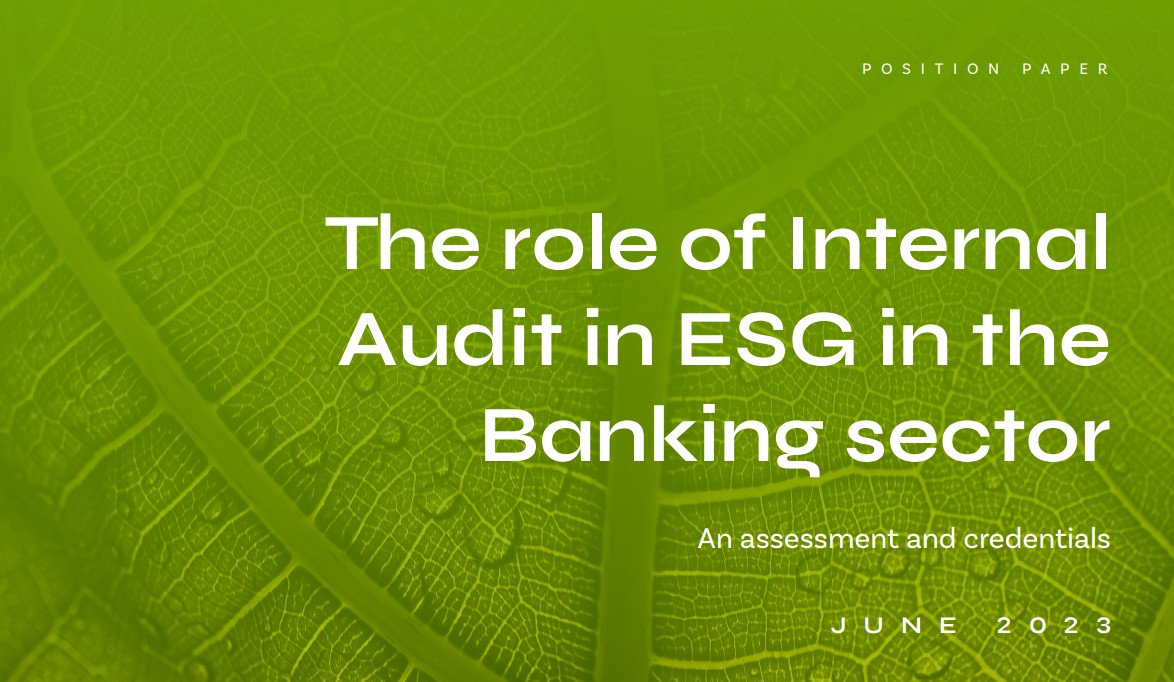Within the last few years, the EU has issued many new regulations and guidance on ESG. Internal Audit is well positioned to help banks navigate this fast-changing world of ESG regulations and stakeholder expectations. In this position paper ECIIA Internal Audit’s role in guiding ESG developments in banking.
In a field that is in constant motion and where national and international standards are still in flux, both assurance and advisory services can add real value. In this respect, development of Internal Audit skills and capabilities is a critical lever for the Entity to respond adequately to these big changes. A sound education in ESG themes and identifying common audit approaches on the matter will significantly support the ESG goals and objectives.
Key examples of new legislation and regulation include the Sustainable Finance Taxonomy, the CSRD, accompanied by the draft European Sustainability Reporting Standards (ESRS), the ECB “Guide on Climate-related and Environmental Risks”, as well an overview of good practices for climate-related and environmental risk management, the Corporate Sustainability Due Diligence Directive (CSDDD, draft). The Security Exchange Commission (SEC) recently also announced its plans to integrate climate change risks into mainstream financial reporting requirements.
The report underscores the vital role Internal Audit plays in this ESG management. It calls for Internal Audit to actively engage in ESG matters and help guide organizations on the path to sustainability journey. The relevance of ESG risks and the incorporation of ESG in the strategy of companies requires the involvement of the Internal Audit function to support the bank’s response to these material challenges. The ESG territory is still developing and there are many (regulatory) uncertainties and challenges, but this cannot be used as an excuse/limitation for Internal audit functions not to get involved and support organizations on their pathway towards a sustainable future.


